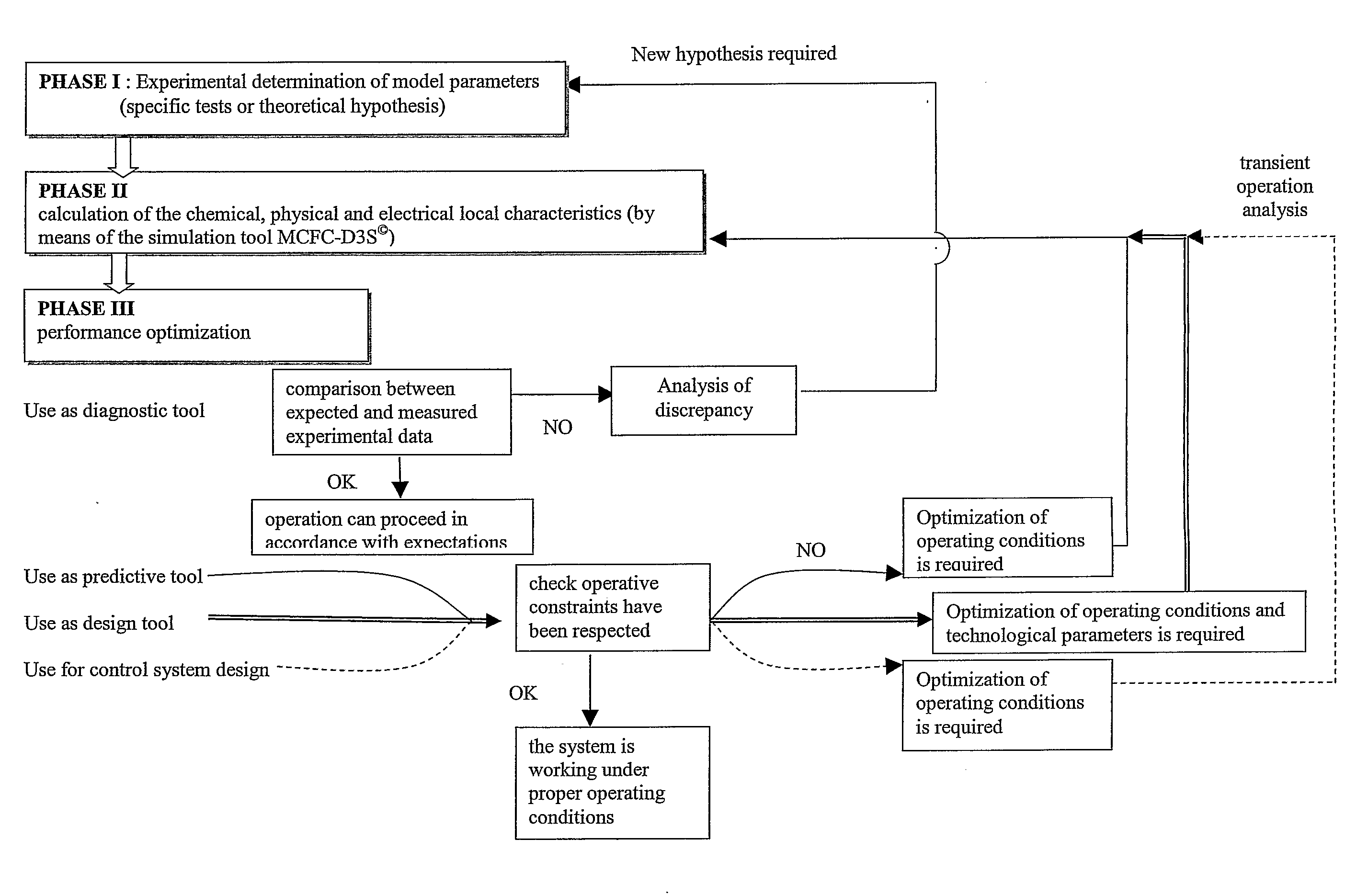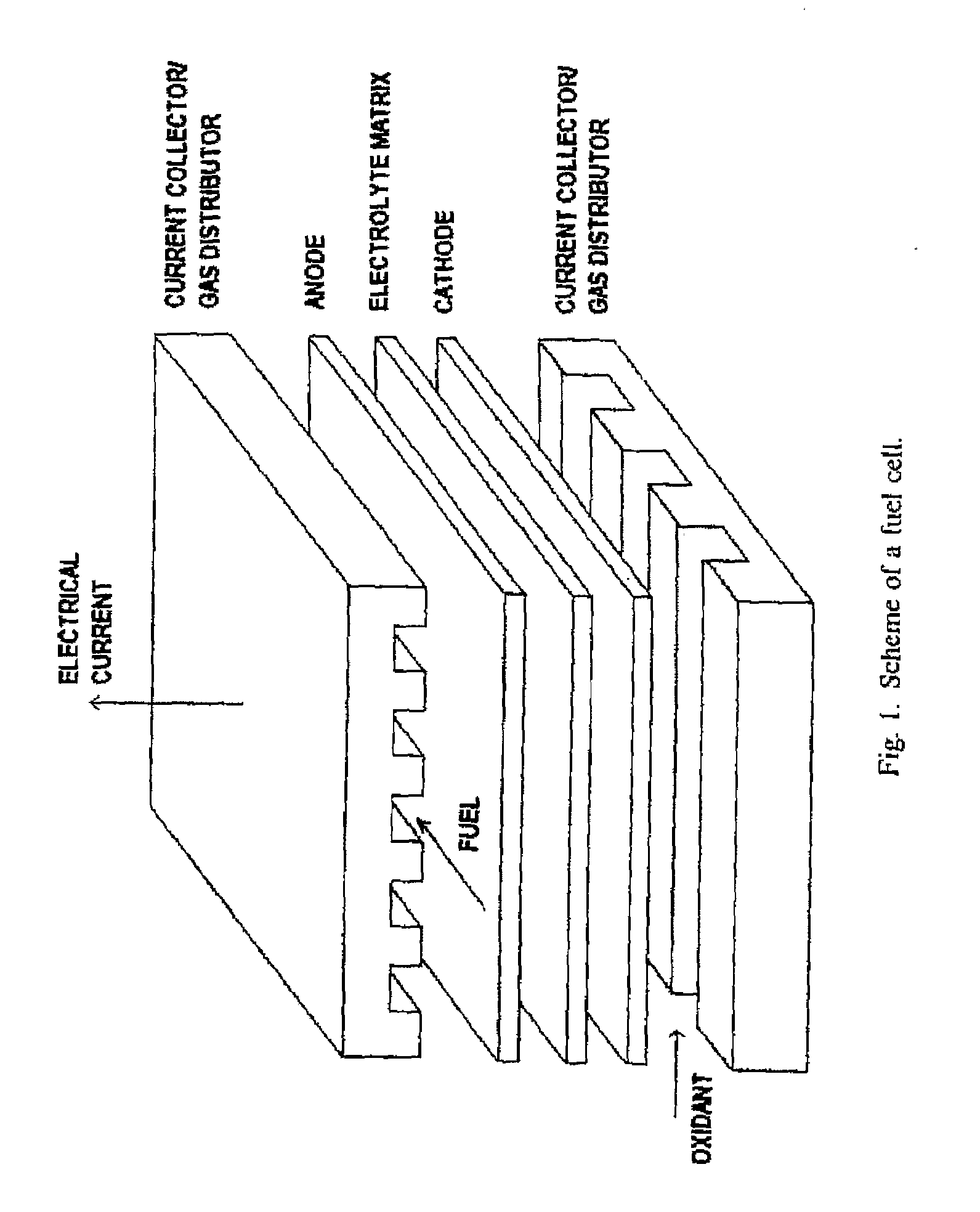Method and System of Operating Molten Carbonate Fuel Cells
a fuel cell and carbonate technology, applied in the field of fuel cells, can solve the problems of low electromotive force of unit cells, no practical use, and change of porous structur
- Summary
- Abstract
- Description
- Claims
- Application Information
AI Technical Summary
Benefits of technology
Problems solved by technology
Method used
Image
Examples
Embodiment Construction
[0039]Molten carbonate fuel cells are reactors which, from an electrochemical point of view, have to be considered innovative since they convert the chemical energy of the fuel fed to the reactor directly into electrical energy. They are also characterised by high yields optimisation of the MCFC three steps have been used:
1. the evaluation of the experimental values of the MCFC which has to be tested;
2. the evaluation of the local chemical, physical and electrical conditions; the optimisation of the working conditions based on the results obtained and on specific operating constants.
[0040]The procedure applied by the method is summarised in the flow chart on FIG. 16 and follows the scheme:
Phase 1: Evaluation of the Experimental Values
[0041]The determination of the reference experimental values relating both to the kinetic and the electrochemical characteristics of the cell is carried out on a sample cell having the same constructional properties and undergoing the same storage and w...
PUM
 Login to View More
Login to View More Abstract
Description
Claims
Application Information
 Login to View More
Login to View More - R&D
- Intellectual Property
- Life Sciences
- Materials
- Tech Scout
- Unparalleled Data Quality
- Higher Quality Content
- 60% Fewer Hallucinations
Browse by: Latest US Patents, China's latest patents, Technical Efficacy Thesaurus, Application Domain, Technology Topic, Popular Technical Reports.
© 2025 PatSnap. All rights reserved.Legal|Privacy policy|Modern Slavery Act Transparency Statement|Sitemap|About US| Contact US: help@patsnap.com



